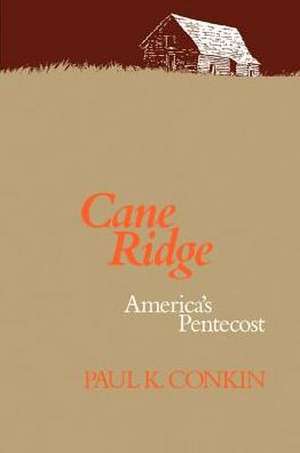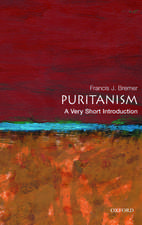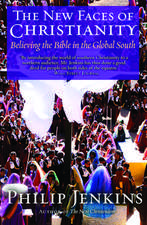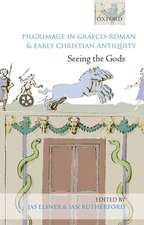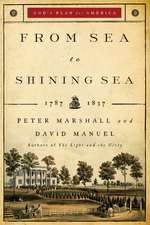Cane Ridge: America's Pentecost: Curti Lecture Series
Autor Paul K. Conkinen Limba Engleză Paperback – 15 dec 1990
What happened at or near the Cane Ridge meeting house in central Kentucky in August 1801 has become a legendary event in American religious history. Never before in America had so many thousands of people gathered for what became much more than the planned Presbyterian communion service. Never had so many families camped on the grounds. Never before had so many people been affected with involuntary physical exercises—sobbing, shouting, shaking, and swooning. And never before in American had a religious meeting led to so much national publicity, triggered so much controversy, or helped provoke such important denominational schisms.
Paul Conkin tells the story of Cane Ridge in all its dimensions. The backdrop involves the convoluted history of Scotch-Irish Presbyterianism in America, the pluralistic religious environment in early Kentucky, and the gradual evolution of a new form of evangelical religious culture in eighteenth-century America.
The aftermath was complex. Cane Ridge helped popularize religious camps and influenced the subsequent development of planned camp meetings. It exposed deep and developing divisions of doctrine among Presbyterian clergy, and contributed to the birth of two new denominations —Christians (Disciples of Christ) and Cumberland Presbyterians and furthered the growth of a new revival culture, keyed to a crisis-like conversion experience, even as it marked a gradual decline in sacramentalism.
Paul Conkin tells the story of Cane Ridge in all its dimensions. The backdrop involves the convoluted history of Scotch-Irish Presbyterianism in America, the pluralistic religious environment in early Kentucky, and the gradual evolution of a new form of evangelical religious culture in eighteenth-century America.
The aftermath was complex. Cane Ridge helped popularize religious camps and influenced the subsequent development of planned camp meetings. It exposed deep and developing divisions of doctrine among Presbyterian clergy, and contributed to the birth of two new denominations —Christians (Disciples of Christ) and Cumberland Presbyterians and furthered the growth of a new revival culture, keyed to a crisis-like conversion experience, even as it marked a gradual decline in sacramentalism.
Preț: 137.19 lei
Nou
Puncte Express: 206
Preț estimativ în valută:
26.25€ • 27.48$ • 21.85£
26.25€ • 27.48$ • 21.85£
Carte tipărită la comandă
Livrare economică 31 martie-14 aprilie
Preluare comenzi: 021 569.72.76
Specificații
ISBN-13: 9780299127244
ISBN-10: 0299127249
Pagini: 198
Dimensiuni: 152 x 229 x 13 mm
Greutate: 0.29 kg
Editura: University of Wisconsin Press
Colecția University of Wisconsin Press
Seria Curti Lecture Series
ISBN-10: 0299127249
Pagini: 198
Dimensiuni: 152 x 229 x 13 mm
Greutate: 0.29 kg
Editura: University of Wisconsin Press
Colecția University of Wisconsin Press
Seria Curti Lecture Series
Recenzii
“Cane Ridge is mentioned far more often than it is understood. Thanks to this book, a richer understanding is now ours. We learn of the Scottish Presbyterian sacramental tradition, of the pervasive revivalism in America, of the climactic event in Kentucky, and finally of the far-reaching consequences for American religion and for the nation as a whole.”—Edwin S. Gaustad, University of California, Irvine
Notă biografică
Paul K. Conkin is Distinguished Professor of History Emeritus at Vanderbilt University. His many publications include Puritans and Pragmatists and Big Daddy from the Perdenales: Lyndon Baines Johnson.
Descriere
What happened at or near the Cane Ridge meeting house in central Kentucky in August 1801 has become a legendary event in American religious history. Never before in America had so many thousands of people gathered for what became much more than the planned Presbyterian communion service. Never had so many families camped on the grounds. Never before had so many people been affected with involuntary physical exercises—sobbing, shouting, shaking, and swooning. And never before in American had a religious meeting led to so much national publicity, triggered so much controversy, or helped provoke such important denominational schisms.
Paul Conkin tells the story of Cane Ridge in all its dimensions. The backdrop involves the convoluted history of Scotch-Irish Presbyterianism in America, the pluralistic religious environment in early Kentucky, and the gradual evolution of a new form of evangelical religious culture in eighteenth-century America.
The aftermath was complex. Cane Ridge helped popularize religious camps and influenced the subsequent development of planned camp meetings. It exposed deep and developing divisions of doctrine among Presbyterian clergy, and contributed to the birth of two new denominations —Christians (Disciples of Christ) and Cumberland Presbyterians and furthered the growth of a new revival culture, keyed to a crisis-like conversion experience, even as it marked a gradual decline in sacramentalism.
Paul Conkin tells the story of Cane Ridge in all its dimensions. The backdrop involves the convoluted history of Scotch-Irish Presbyterianism in America, the pluralistic religious environment in early Kentucky, and the gradual evolution of a new form of evangelical religious culture in eighteenth-century America.
The aftermath was complex. Cane Ridge helped popularize religious camps and influenced the subsequent development of planned camp meetings. It exposed deep and developing divisions of doctrine among Presbyterian clergy, and contributed to the birth of two new denominations —Christians (Disciples of Christ) and Cumberland Presbyterians and furthered the growth of a new revival culture, keyed to a crisis-like conversion experience, even as it marked a gradual decline in sacramentalism.
